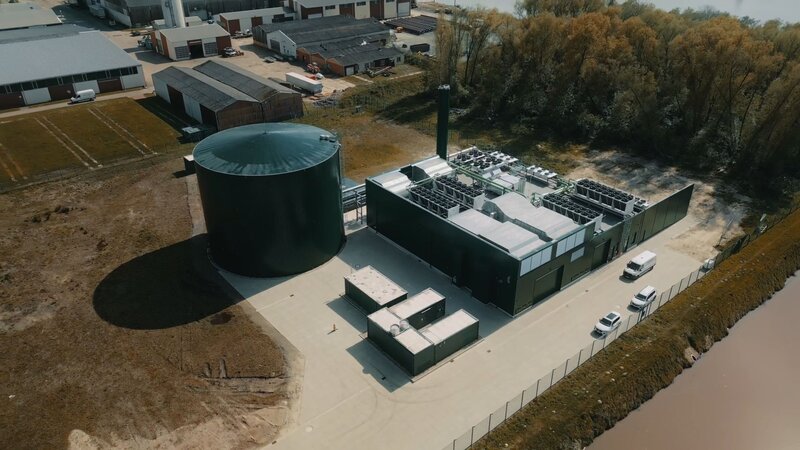Blueprint for system-serving linkage
An innovative CHP plant has gone into operation in Papenburg, Lower Saxony. It benefits not only local greenhouse operators, but also the power grid.
Faits et chiffres

The "Hafenwärme Papenburg" project "impressively shows that the integration of renewable energies into the heating sector is also possible on an industrial scale," says Christian J. Castro, Head of Business Development at Denker & Wulf and project manager.
"Especially for industry, such systems can continue to play an important role for some time to come. The original idea was initially to "combine renewable energy projects directly with power-to-heat plants. Then the plan quickly developed to develop and build sector coupling plants for the energy transition as part of a strategic partnership," says Castro. "We have found heat consumers and a suitable plot of land that have made it possible to build and operate the Papenburg iCHP plant," says Martin Rechl, Managing Director of Glood GmbH. The plant received iCHP approval in 2022 and then went into regular operation. The heat is supplied to horticultural businesses via a district heating pipeline about three kilometres long. These had previously supplied themselves with heat from coal combustion for the most part.
The iCHP plant in Papenburg has a total thermal capacity of about 9 MW and an electrical capacity of 10 MW. A total of four large heat pumps, each with an output of 700 kW, generate regenerative heat. The plant also consists of two smaller and two large combined heat and power plants from the manufacturer 2G Energy. The iCHP system also includes a 2,750 kW power-to-heat system from Glood. Four large heat pumps, four CHP units, a PtH system, a buffer tank. The combination of highly flexible combined heat and power plants with four large heat pumps and a power-to-heat system stabilises the public power grid at the same time. Instead of simply shutting down wind and solar power plants in times of excessive feed-in, surplus electricity is converted into heat and made usable for heating operation directly or via a 5 million liter intermediate storage tank. Thus, according to the project partners, the iCHP plant on Seeschleusenstraße can be regarded as a blueprint for the system-serving linking of the heat and electricity sectors in the sense of the energy transition. The planned annual energy volumes are around 30 million kWh of electricity and about 40 million kWh of heat. Castro is certain that such plant combinations will become more important for the heating transition.








